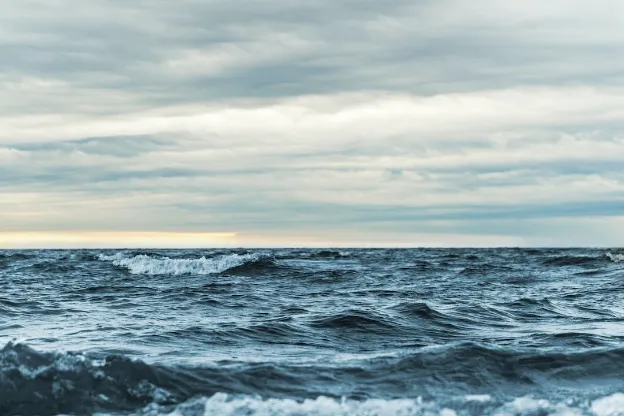What is Carbon Sequestration? A Vital Solution to Global Warming

-
Types of Carbon Sequestration
-
Challenges and Limitations for Carbon Sequestration
-
Final Thoughts on Carbon Sequestration
Carbon sequestration is a process that has gained significant attention in recent years due to its potential to mitigate climate change and reduce greenhouse gas emissions.
As the world grapples with the effects of global warming and the need to transition to a more sustainable future, carbon sequestration offers a promising solution.
Carbon sequestration refers to the long-term storage of carbon dioxide (CO2) from the atmosphere, preventing it from contributing to the greenhouse effect.
This can be achieved through natural processes, such as reforestation, which involve planting trees and vegetation to absorb CO2.
Additionally, technological advancements have led to the development of carbon capture and storage (CCS) techniques, where CO2 emissions from power plants and industrial facilities are captured and stored underground, preventing their release into the atmosphere.
The potential benefits of carbon sequestration are vast, as it not only helps to combat climate change by reducing the concentration of CO2 in the atmosphere but also promotes sustainable land use, enhances biodiversity, and improves soil fertility.
However, despite its immense potential, carbon sequestration is faced with several challenges.
These include the high costs associated with implementing CCS technologies and the need for large-scale investment and infrastructure.
Additionally, the permanence and effectiveness of sequestered carbon need to be ensured to avoid potential leakage or reversal of the process.
Types of Carbon Sequestration
There are several methods and techniques for carbon sequestration, each with its own benefits and limitations.
One common approach is terrestrial sequestration, which involves capturing carbon through natural processes in vegetation, forests, and soil.
Trees, plants, and crops absorb CO2 during photosynthesis and store it in their biomass and roots.
This type of sequestration is often referred to as biological or natural carbon sequestration.
Another method is geological sequestration, which involves capturing CO2 emissions from large point sources such as power plants or industrial facilities and injecting it deep underground for long-term storage.
This process is commonly known as carbon capture and storage (CCS) and is particularly effective in reducing emissions from industrial sectors.
CCS can also be used for enhanced oil recovery, where CO2 is injected into oil reserves, increasing their production while simultaneously storing carbon.
Ocean sequestration is another type that involves the absorption of CO2 by the oceans.
The world's oceans are the largest carbon sink, absorbing about a quarter of all human-emitted CO2.
However, excessive carbon absorption leads to ocean acidification, which has severe consequences for marine life.
It is crucial to strike a balance between ocean sequestration and preserving the health of marine ecosystems.
Lastly, there is mineral sequestration, which involves the conversion of CO2 into stable mineral forms.
This method is still in the early stages of development but shows promising potential for long-term carbon storage.
By capturing CO2 and combining it with certain minerals, such as magnesium or calcium, it can be transformed into solid carbonates that can be stored indefinitely.
In addition to these solutions, there is growing interest in the potential of direct air capture (DAC) technology.
DAC involves capturing carbon dioxide directly from the ambient air and storing it permanently.
This approach offers the advantage of being able to target carbon emissions from point sources as well as from the atmosphere.
Although it is currently a costly process, ongoing research and development in DAC holds promise for making it a more viable solution in the future.
Terrestrial, geological, ocean, and mineral sequestration offer different approaches and opportunities for combating climate change and reducing greenhouse gas emissions.
Implementing a combination of these methods is crucial in achieving a sustainable and carbon-neutral future.
Challenges and Limitations for Carbon Sequestration
Carbon sequestration has emerged as a promising solution to mitigate the alarming levels of carbon dioxide in the atmosphere and combat climate change.
However, despite its potential benefits, there are several challenges and limitations that must be considered when exploring this approach.
One of the major challenges associated with carbon sequestration is the high cost involved in implementing large-scale projects.
The technologies and infrastructure required for capturing and storing carbon emissions can be expensive, making it difficult to achieve widespread adoption.
Additionally, the maintenance and monitoring of these facilities also require significant financial resources, further adding to the overall cost.
Overcoming this financial barrier is crucial to ensuring the viability and scalability of carbon sequestration methods.
Another limitation of carbon sequestration is the issue of permanence.
While carbon captured and stored underground or in other forms can provide immediate reductions in atmospheric CO2 levels, there is always a risk of leakage or re-release.
Ensuring the long-term permanence of stored carbon is essential to avoid any potential negative impacts on the environment.
Extensive research and development efforts are necessary to improve storage techniques and minimize the risk of accidental release.
The geographic limitations of carbon sequestration also pose a significant challenge.
Some regions may have limited storage capacity or suitable geological formations for effective carbon storage.
This limitation necessitates careful site selection and assessment to identify areas where carbon sequestration can be implemented optimally.
Additionally, the transportation of captured carbon from emission sources to storage sites can also be logistically challenging, especially when dealing with remote locations.
While carbon sequestration holds great potential as a climate change mitigation strategy, addressing the challenges and limitations associated with its implementation is crucial.
Overcoming financial barriers, ensuring permanence, and dealing with geographic limitations are key areas that require focused research and technological advancements to make carbon sequestration a sustainable solution for reducing greenhouse gas emissions.
Final Thoughts on Carbon Sequestration
In conclusion, carbon sequestration plays a vital role in the battle against climate change.
It offers a practical and effective approach to reduce carbon dioxide concentrations in the atmosphere and slow down the rate of global warming.
By utilizing natural processes and innovative technologies, we can capture and store carbon dioxide, preventing its release into the atmosphere and mitigating its adverse effects.
Furthermore, carbon sequestration brings about multiple co-benefits that contribute to the overall sustainability of our planet.
It not only helps restore ecosystems and protect biodiversity but also creates economic opportunities through the development of carbon markets.
As individuals and communities, we must recognize the importance of carbon sequestration and actively support its implementation.
By investing in research, funding carbon offset projects, and advocating for policies that promote carbon sequestration, we can make a significant impact in the fight against climate change. Together, we can work towards a more sustainable future and ensure the wellbeing of our planet for generations to come.
-
Types of Carbon Sequestration
-
Challenges and Limitations for Carbon Sequestration
-
Final Thoughts on Carbon Sequestration


